One of the most challenging tasks couples face when organizing a wedding is the seating plan, the arrangement of guests at the banquet tables.
Don’t worry, if you’re starting to organize the guest tables for your wedding, we have all the information you need to know about a wedding seating plan and how to organize the tables.
What is a wedding seating plan?
A wedding seating plan is the arrangement of guests at the banquet tables. It specifies who sits at each table and in what order they are seated.
The seating plan is organized in a list format, indicating the table number or name and the list of guests who will sit there.
In the guest list for each table, the first person will be the head of the table, and the rest of the guests will sit in the order listed, following the clockwise direction.
On the wedding day, the seating plan will be displayed on a board with cards or some special structure so that guests can see where they are seated. But before the wedding, you work with your coordinator or Wedding Planner using a room layout and an Excel document. This document will include the complete list of guests by table and should indicate if any guest has any food allergies or intolerances to be considered, or any important information.
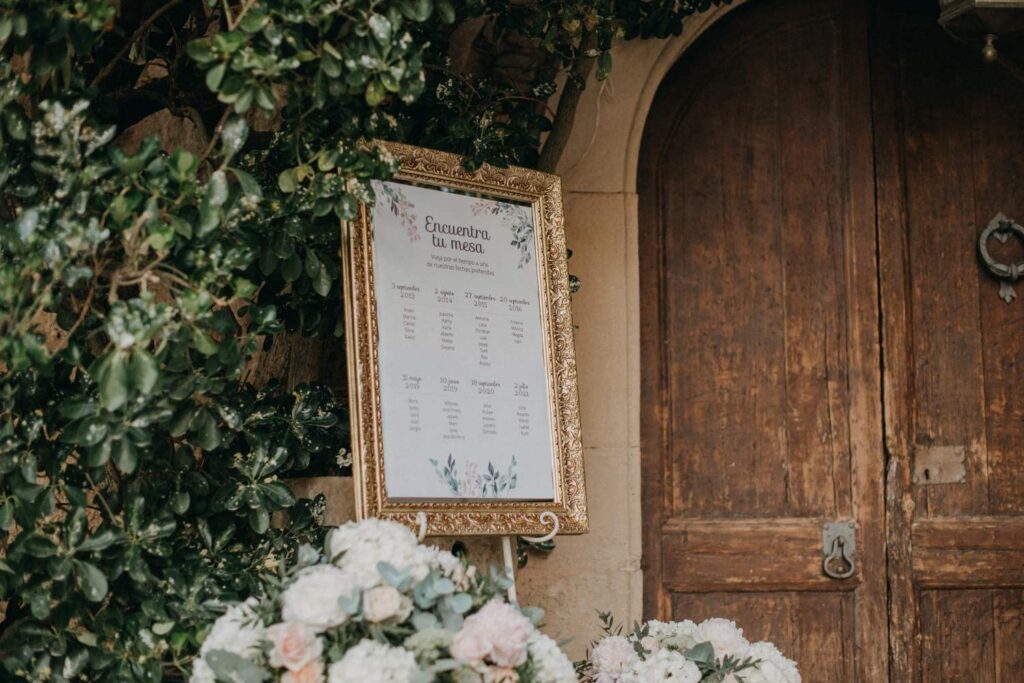
Seating plan by Entre tonos pastel Wedding planner photographed by North Miles
Where to Place the Seating Plan?
The wedding seating plan is usually placed at the entrance of the banquet hall or nearby so that once the cocktail hour is over, guests can see the seating plan and find their assigned seats.
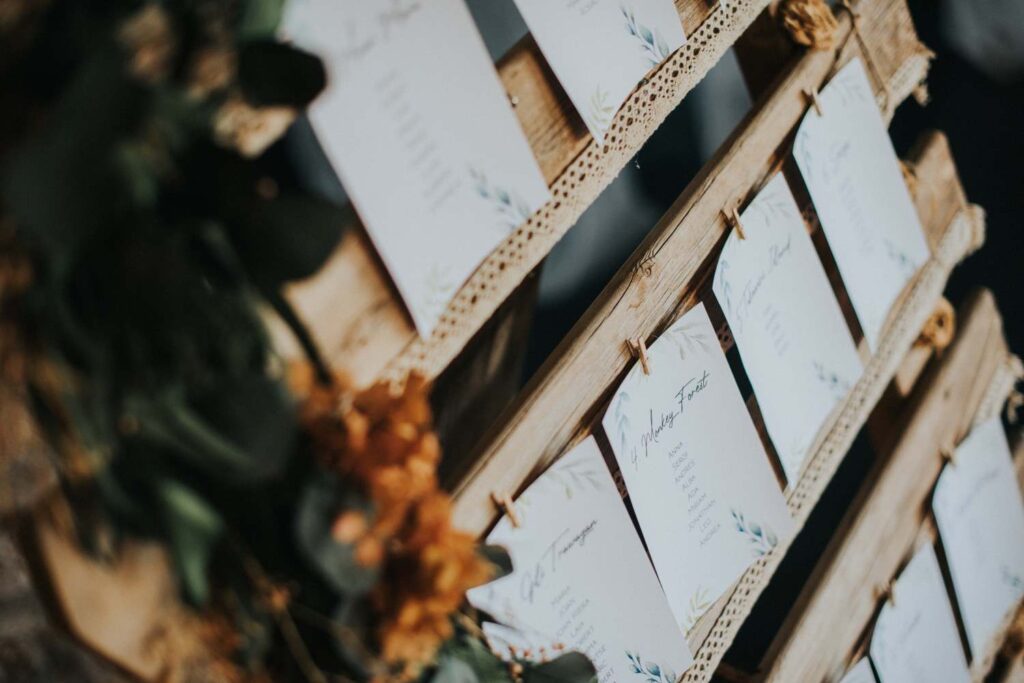
by North Miles
To ensure guests know their table, the tables should have a table number (1, 2, 3, etc.) or a table name. For table names, you can think of original ideas like names of cities you have traveled to, movie titles, song titles, your pets’ names, etc.
On the tables, there are usually place cards so each guest knows their exact seat. These can be cards or even a small gift like a magnet with the guest’s name, a keychain, or some personalized item.
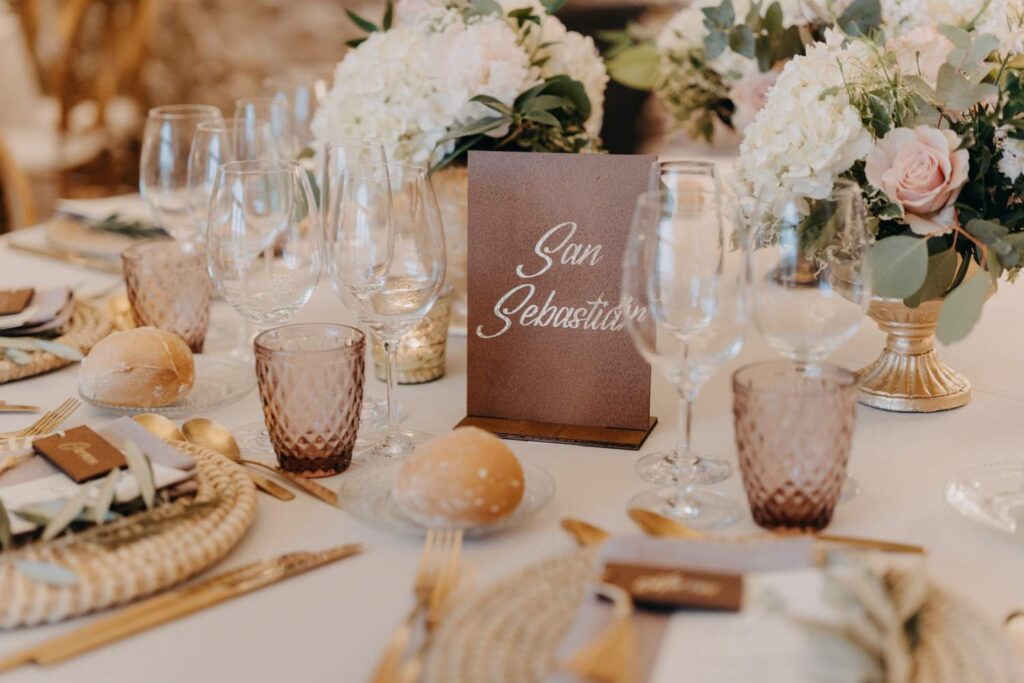
Table name by Entre tonos pastel Wedding Planner photographed by North Miles
How to organize the seating plan for a wedding
Although traditionally the couple sits with their parents at the head table, there are now countless variations of head tables: the couple alone, the couple with bridesmaids and groomsmen, a long table with close friends or family, etc.
Another aspect to consider for the head table is that it is usually set up in a “half-moon” shape (round tables) or with only one side occupied (rectangular tables), so the couple has no one in front of them and can see the entire room.
At the tables closest to the couple, direct family members usually sit, followed by friends, more distant relatives or acquaintances, and at the last tables, children are often placed. There will also be a table for staff (photographer, DJ, Wedding Planner, etc.).
Tables usually seat 8 to 10 people, although you can combine different rectangular tables to make a table of 18 people, for example. There are countless combinations!
Example of a seating plan room layout:
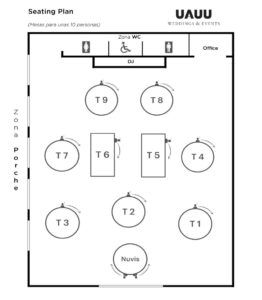
Original seating plan ideas
There are many original wedding seating plan ideas; here are our favorites:
- The classic: A beautiful board or decoration, in line with the venue, with cards showing the table number or name and the guests seated at each table. You’ll find them in our venues.
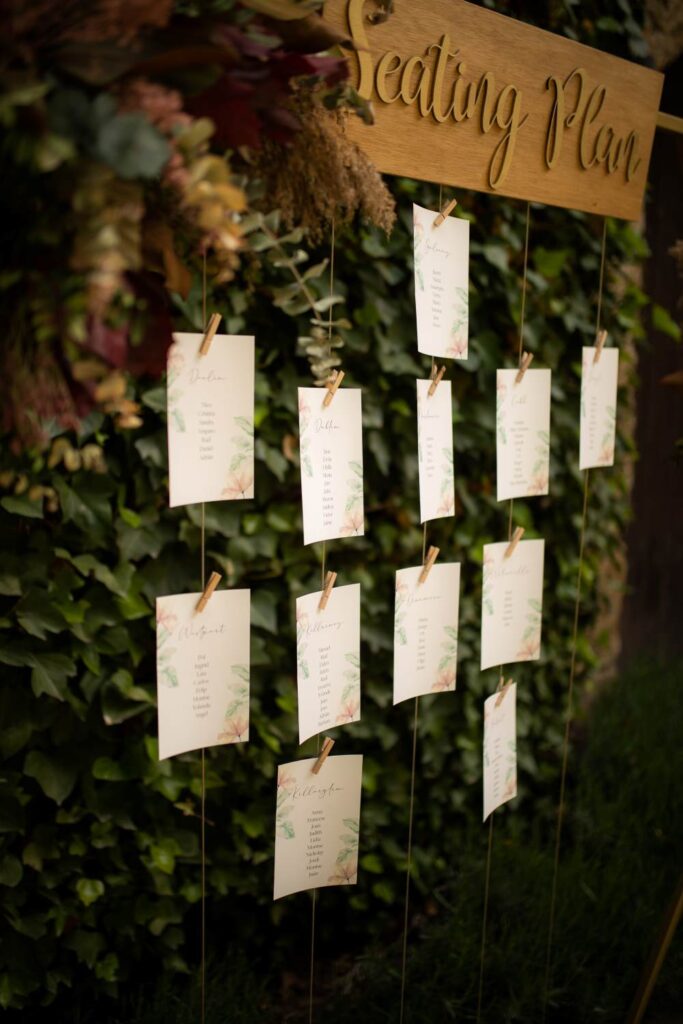
by Wedding visual
- Travel-Inspired: If you love to travel, this is your seating plan. How about a seating plan inspired by the trips you’ve taken or different countries you’ve lived in? You can set up a seating plan with vintage suitcases, a board inspired by an airport flight screen, or a world map.
- Potted Plants: If your wedding is rustic, you can create a seating plan inspired by the countryside with potted plants, country baskets, flowers… It will be very original!
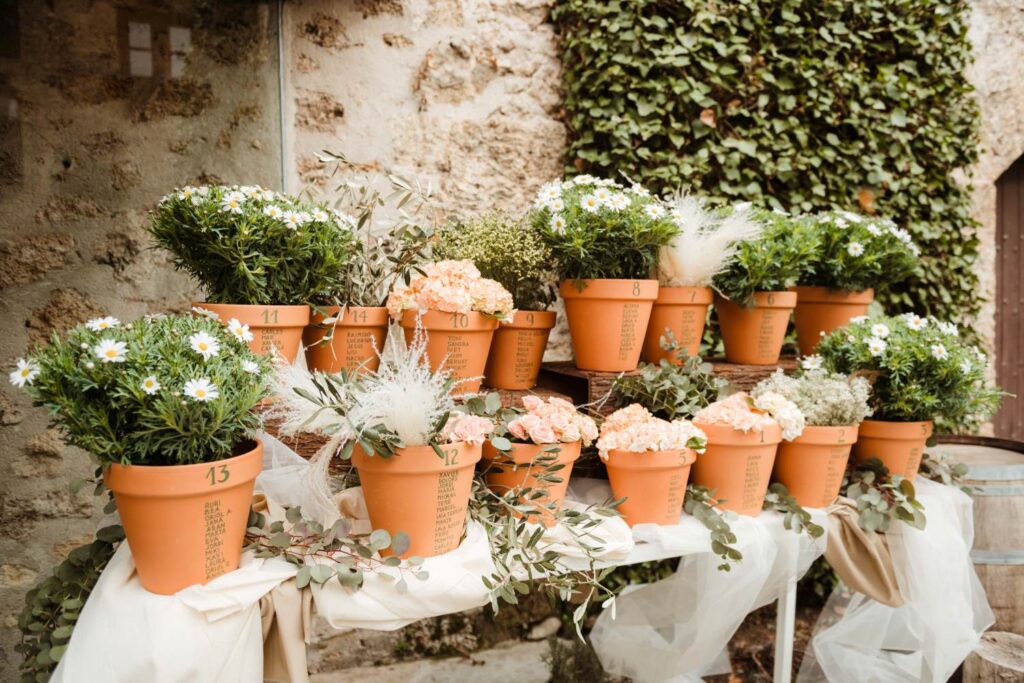
by Wabisabi Weddings
- Books: If you want to tell your love story… How about a seating plan inspired by books? Each table can be a chapter of your story.
- Shots: The boldest idea! How about a seating plan that’s a shelf or table with shot glasses with guests’ names on them, and each guest drinks their shot before sitting down to the banquet? You can also opt for a non-alcoholic option by putting a jar with candies or a non-alcoholic drink
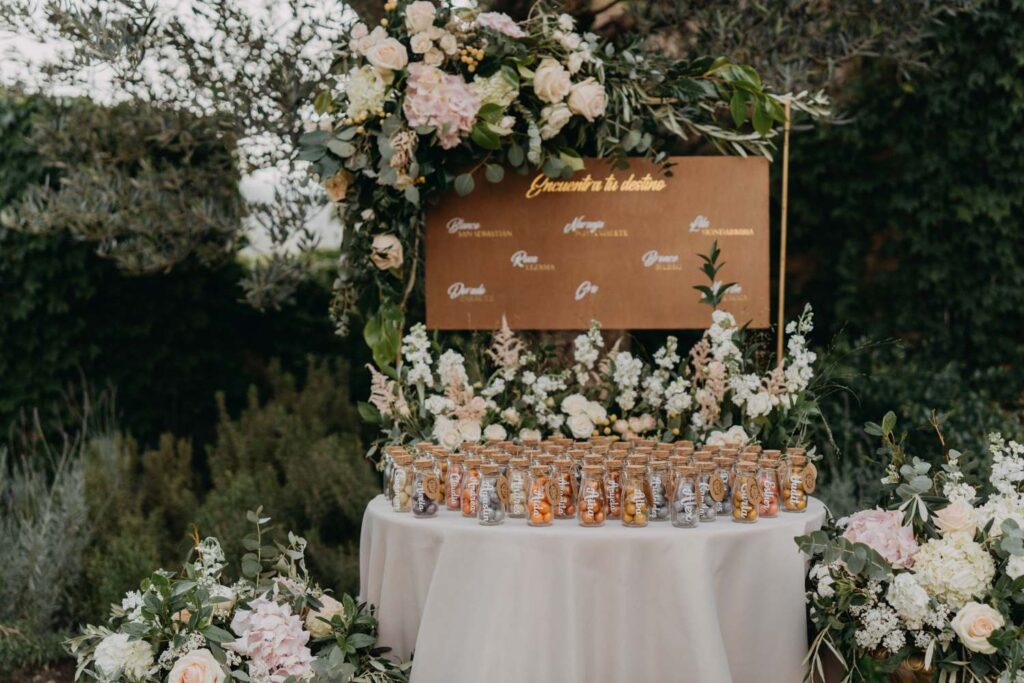 Seating plan by Entre Tonos Pastel Wedding Planner photographed by North Miles
Seating plan by Entre Tonos Pastel Wedding Planner photographed by North Miles
Tips for organizing your wedding seating plan
- Do it in advance: Arranging the tables is no easy task. We recommend starting early so you don’t have to rush at the last minute. Ask your guests to confirm their attendance at least one month before.
- Work with a banquet room layout: To create the seating plan, start by drawing a layout of the room on paper and distributing the tables. Example: Table 1 (Siblings), Table 2 (Cousins), etc. Then write the guest list for each table.
- Start with close family: To speed up the process, a good tip is to start with close family and friends and then expand outward. It will be much easier.
- Group guests: Group guests by groups (college friends, childhood friends, cousins, aunts and uncles, grandparents, etc.) and by age. This way, if they don’t know each other but are roughly the same age, they’ll have things in common, making conversation easier.
- Tables of at least 6 people: Tables at weddings usually have 8 to 10 guests. However, this can vary for each wedding. We recommend a minimum of 6 people per table to create a relaxed atmosphere and encourage conversation among guests.
- Think about the structure of the seating plan: Once you have the seating plan on paper, it’s time to think about how you want it to appear on the wedding day (what the guests will see). Hanging cards on a board, a frame with the tables, potted plants, etc.
- Add a personal touch: Typically, tables are numbered, but you might personalize it by adding a name to each table. Names of cities, countries, plants, etc.
- Make it easy to read: Essential for guests to quickly understand the seating plan and find their table.
- Place it near the banquet hall: This way, guests won’t forget their table number, making it easier for them to find their seats.
- Get advice from your coordinator or Wedding Planner: If you don’t know where to start or have doubts about how to distribute the tables or guests, don’t hesitate to ask your coordinator or Wedding Planner for help. They have seen hundreds of seating plans and will surely have many ideas.